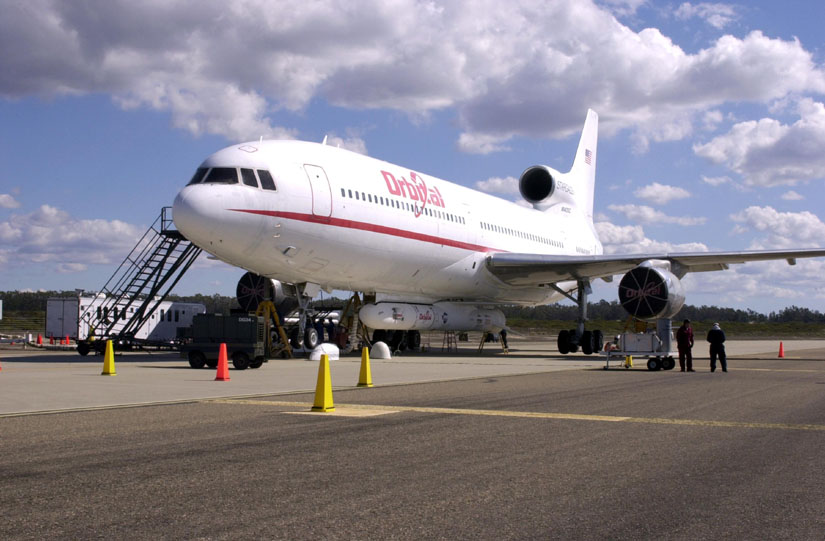La fusée américaine Pegasus XL/HAPS
01-01-2017 (Màj: 01-01-2017)
Philippe Volvert
 Prépartion de l'avion L-1011 transportant une fusée Pegasus en vue de la mise sur orbite du satellite DART - Photo NASA (Agrandir)
Prépartion de l'avion L-1011 transportant une fusée Pegasus en vue de la mise sur orbite du satellite DART - Photo NASA (Agrandir)
Carrière
- Opérateur: Northrop Grumman Innovation Systems
- Maître d'oeuvre: Northrop Grumman Innovation Systems
- Premier vol: 23/12/1997
- Dernier vol: En service
- Sites de lancement: EAFB, WIFF
Fiche technique
- Hauteur (m): 16,94
- Masse au décollage (t): 22,65
- Masse d'ergols (t): 19,78
- Poussée au décollage (kN): 647,50
Performances
Premier étage (Orion 50SXL)
- Longueur (m): 10,34
- Diamètre (m): 1,27
- Motorisation: 1 x ATK
- Propergols: Poudre
- Poussée (kN): 647,50
- Durée (s): 69
Deuxième étage (Orion 50XL)
- Longueur (m): 2,19 (3,00)
- Diamètre (m): 1,27
- Motorisation: 1 x ATK
- Propergols: Poudre
- Poussée (kN): 160,60
- Durée (s): 70
Troisième étage (Orion 38)
- Longueur (m): 1,34 (1,76)
- Diamètre (m): 1,27 (0,96)
- Motorisation: 1 x ATK
- Propergols: Poudre
- Poussée (kN): 32,20
- Durée (s): 68
Quatrième étage (HAPS)
- Longueur (m): 0,71
- Diamètre (m): 0,40
- Motorisation: 1 x MR-107N (à trois chambres de combustion)
- Propergols: Hydrazine
- Poussée (kN): 0,67
- Durée (s): 245
Coiffe
- Longueur (m): 4,41
- Diamètre (m): 1,27
Sources

